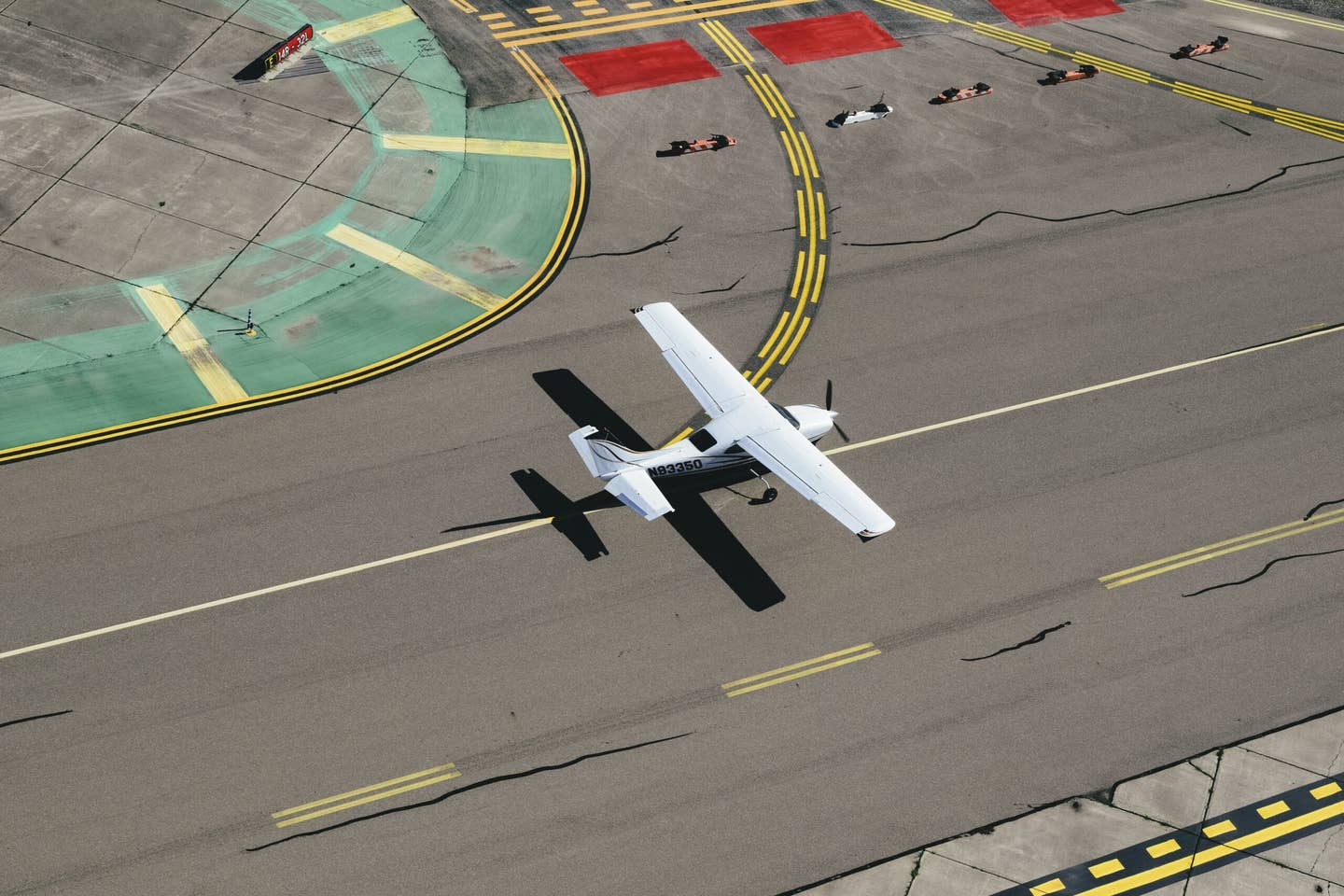Loss of Thrust on Takeoff
I have written far too many stories about fatal accidents that were attributed to an uncommanded loss of engine power.

When flying with another pilot, the loss of thrust or controllability on takeoff briefing needs to include who will be pilot flying, because two pilots fighting over the controls is not going to help. [Image by Tom Gouw/Pexels]
“We have a problem, and we’re returning to the airport.”
These were the words of Richard McSpadden Jr., who was aboard the Cessna 177RG Cardinal belonging to former NFL tight end turned FBO owner Russ Francis. The pair launched from the airport in Lake Placid, New York, on October 1 for a photo flight for the Aircraft Owners and Pilots Association. McSpadden, the senior vice president of the AOPA Air Safety Institute, was a commercially rated pilot who had flown with the Air Force Thunderbirds.
Per protocol on these flights, Francis, as the owner of the airplane, would do the takeoff and landing, and Spad would take the controls for the air-to-air portion of the flight.
According to witnesses, the engine of the Cardinal surged during the takeoff and did not sound like it was making full power, yet the takeoff continued. The aircraft was in the air and out of usable runway when it turned and headed back to the airport. The runway is on top of a berm—the airplane came down in the ravine below its edge. Both men were alive and talking to rescuers, then moments later, they had passed away. The National Transportation Safety Board is still investigating the accident.
This hit me hard because I often talked with McSpadden about aircraft accidents and the importance of teaching and practicing the loss of thrust on takeoff. Although we still don't know what caused the problem aboard the aircraft, there is a strong takeaway from this accident: if it could happen to Spad—Thunderbird Number One with all his training and experience—it could happen to any of us.
Briefing for LOTOTO
I have written far too many stories about fatal accidents that were attributed to an uncommanded loss of engine power. Often the accident happens because the pilot fails to maintain the appropriate speed as indicated on the aircraft’s emergency checklist—or worse yet, pulls back on the stick or yoke trying to stretch the glide, resulting in a stall-spin-die scenario.
A variation of this is when the pilot, trying to return to the runway, puts the aircraft into a steep bank resulting in a loss of vertical lift and a knife-edge impact in the ground.
While the procedure for engine loss at altitude is taught as an emergency usually before first solo, many pilots are not taught to brief the takeoff. That means a review of rotation speed, calling airspeed alive, and procedures if there is a loss of power on takeoff, until they begin their multi-engine training. This is a disservice to the aviation community.
Granted, in a twin, the loss of engine power on one side is dramatic in a different way, as it results in asymmetrical thrust, and the nose yaws and toward the dead engine. If the aircraft has lifted off, the asymmetrical thrust results in an uncommanded and often unrecoverable roll toward the sick engine resulting in a crash. Unless you bring the power on both engines back immediately and pitch for the appropriate V speed, you probably won't live to tell the story.
In a single engine aircraft, a loss of engine power isn't necessarily going to be fatal—as long as the pilot takes prompt and corrective action to maintain airspeed and has someplace to put it down.
Know the Speed You Need
There have been fledgling pilots who ask with some trepidation if a loss of engine power during takeoff is common. The answer is no, but knowing what to do if it does happen is like knowing how to put out a grease fire in your kitchen—you do not have time to experiment and an improper procedure like using water on the fire—or pulling back on the yoke or stick—can make a bad situation worse.
In the aircraft, you need to know what airspeed to pitch for. This is critical.
This speed will vary by make, model, and configuration. This information comes from the pilot's operating handbook or aircraft flight manual and may even be placarded in the aircraft.
The pilot should also note rotation speed, and do the takeoff calculation before getting into the airplane, noting runway condition, temperature, and pressure.
Knowing what performance to expect helps you determine when a takeoff is going poorly and should be aborted. Identify an abort point. For example, if you calculate based on given conditions that you will need 1,130 feet to lift off from that 3,600-foot runway and you're approaching 2,000 feet and you're not up yet and the tachometer shows less than full power, abort.
Quick Reference Cards
If you fly multiple aircraft you may find it handy to make notes for each one and keep them with you for review before a flight in a particular airplane.
The first flight school I worked at had more than 10 Cessna 172s of varying models. The older models had airspeed indicators in miles per hour, the rest of the fleet was in knots. This could and did result in confusion that came back to bite a few pilots. I didn't want to be one of them, so I wrote out the emergency speeds and V speeds for each aircraft on 3 x 5 notecards and carried them in a pouch worn around my neck that also held my airport ID. I did a quick review of the speeds for the aircraft I was assigned before each flight.
The speed to maintain during a loss of engine power on takeoff was the big one—a knot or two could make a difference in the outcome of a situation, and I had no desire to be Junior Test Pilot in the event of an uncommanded loss of engine power, especially when I had someone sitting next to me counting on me to keep them safe.
Verbalize the Procedures
The loss of thrust or control on takeoff is part of my pre-takeoff briefing. It is concise and to the point:
If during the takeoff roll there is anything abnormal, be it an issue with controllability or engine power, we will bring the power to idle and come to a stop on the runway, then assess.
If the aircraft has lifted off and there is usable runway ahead, we will pitch for (insert speed here after verifying with checklist), land on the runway, and assess.
If the aircraft has lifted off and is out of usable runway, we will pitch for (insert speed here) and aim straight ahead or a gentle turn of no more than 30 degrees off the runway centerline aiming for someplace unpopulated, soft, and inexpensive.
Should You Turn Back?
Turning back to the runway can be a dicey situation. It is one of those scenarios I frequently practice in the ATD. If the aircraft is at least 1,000 feet agl, and the aircraft is light enough, it may be possible. It might even be doable at 800 to 700 feet. Always have an idea of where you will put it down if getting back to the runway is not an option—is there an open area of the extended centerline you could land in? An empty parking lot? Trees? A swamp? A road or street? To be clear: I am not a big fan of trying to put it down on a road or street because of power poles, cars, and street signs, however, the law of gravity cannot be denied, so do your best not to endanger anyone else.
In a Two-Pilot Situation
When flying with another pilot, the loss of thrust or controllability on takeoff briefing needs to include who will be pilot flying, because two pilots fighting over the controls is not going to help. One pilot should be pilot flying, the other should be making the radio calls if appropriate and time permits. “I will be pilot flying, you will back me up on the radio,” is the phrase to use.
Oddly, there are some CFIs that say this loss of thrust/control briefing is unnecessary and doesn't do anything but scare the learners. I disagree—and so do the learners, like the one with the Cessna 150 who noted a lack of rpm on takeoff despite the throttle set to full power and aborted before he ran out of runway and options at the same time. Airport Mom was proud.

Subscribe to Our Newsletter
Get the latest FLYING stories delivered directly to your inbox






